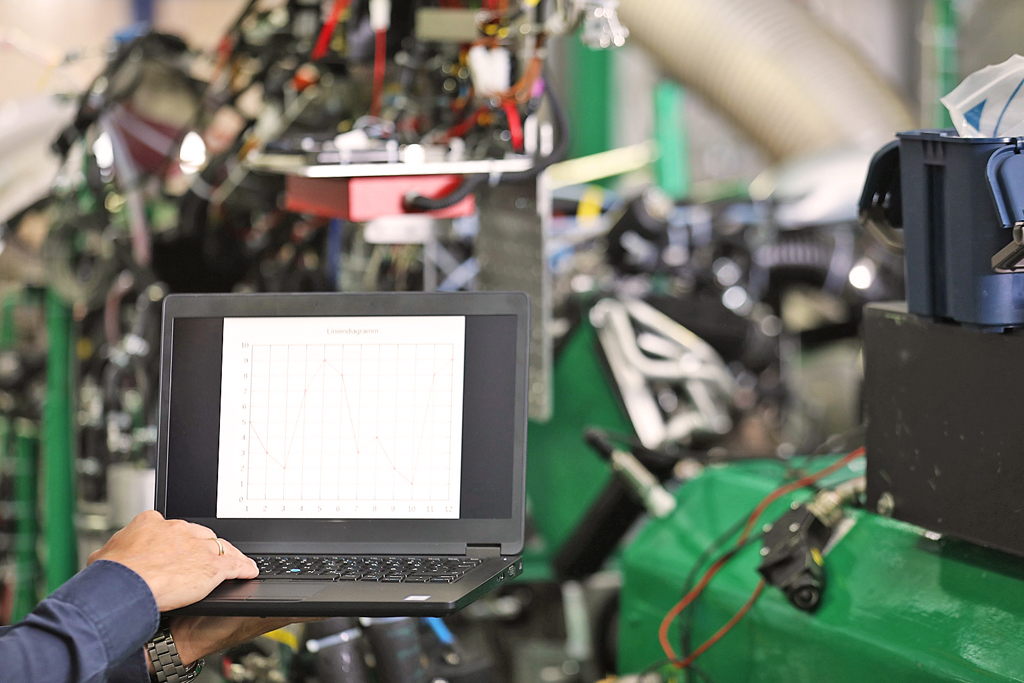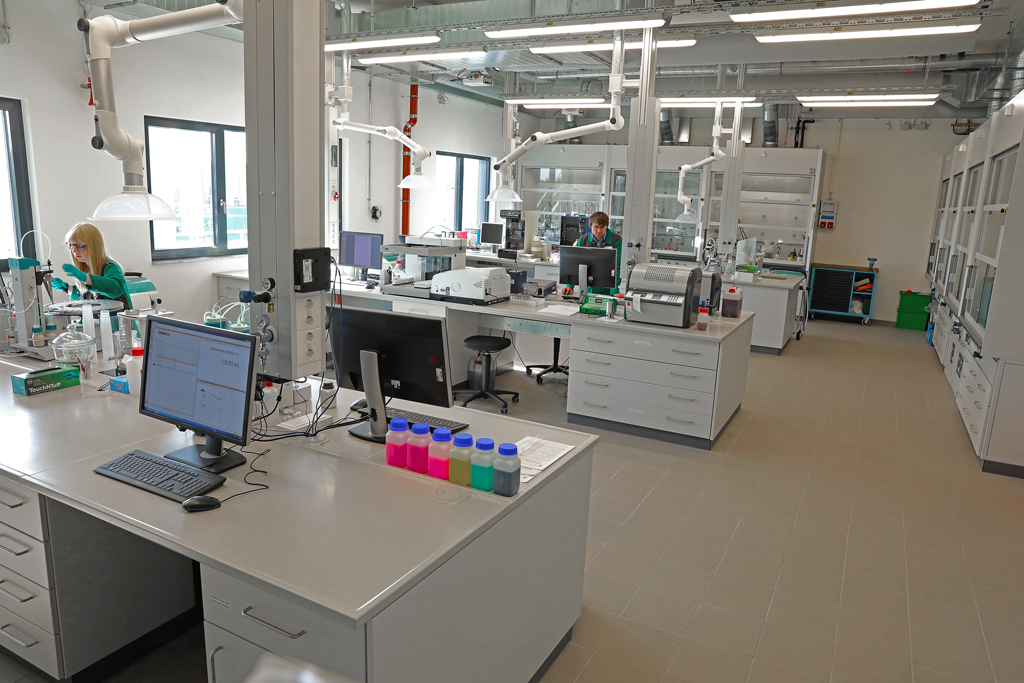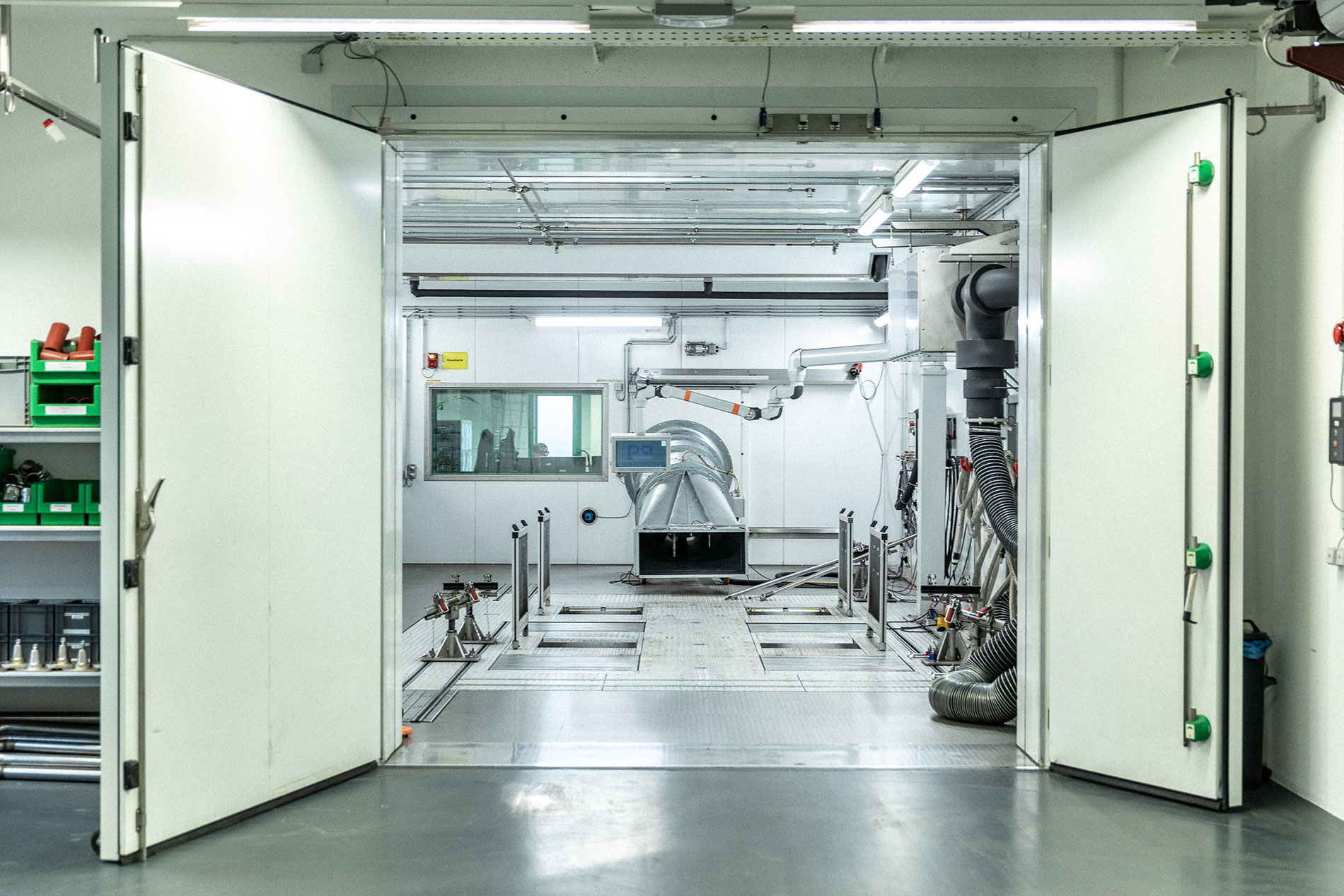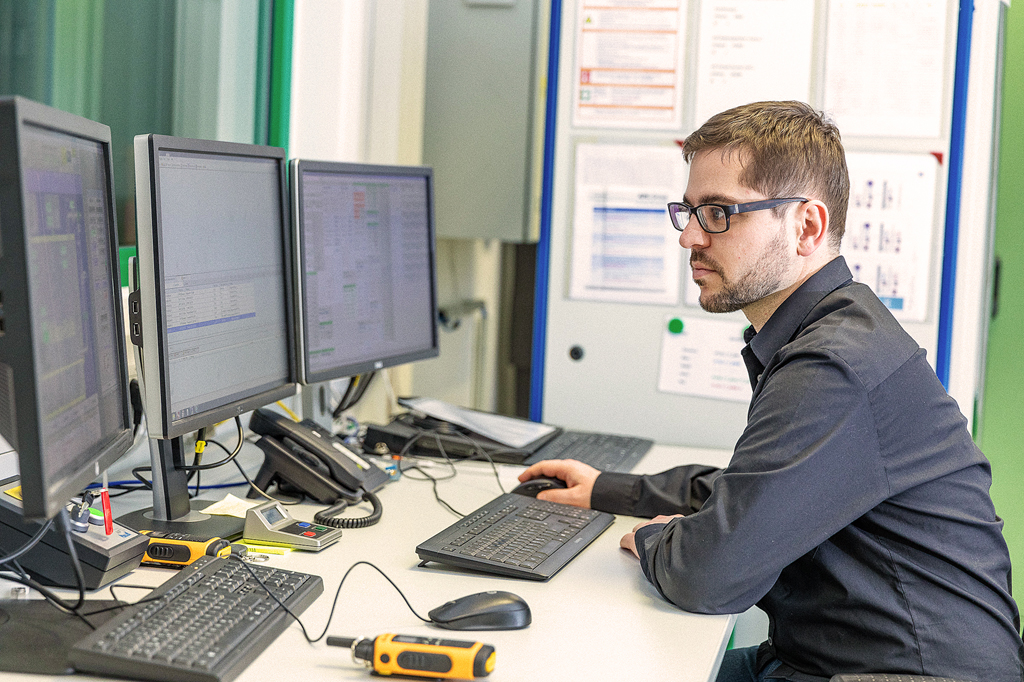// Powertrain Systems in Vehicles
Powertrain optimization on the chassis dyno or the road
For APL, vehicle development activities begin with the first drivable prototype. The projects and fields of activity are broadly diversified; starting with verification of basic data, they extend to system analysis, optimization of the vehicle powertrain, range and consumption analysis – on the chassis dynamometer and/or with a PEMS to measure real driving emissions on the road — and finishing in certification and conformity of production (CoP).
Chassis dyno test center for consumption / emission measurement and range determination
APL operates 15 vehicle chassis dynamometers. These are accredited for development tasks and statutory testing of conventional combustion, hybrid and BEV vehicles (ISC, CoP, certification) in accordance with DIN/ISO 17025 for various international target markets (DAkkS accreditation certificate D‑PL-11082–01-00). The roller test bays undergo regular audits by both the technical service and our customers.
The modern chassis dynamometers and associated emission measurement technology (CVS) from the manufacturer AIP GmbH & Co. KG are all-wheel drive roller test benches for normal temperatures (> 10°C) and are supplemented by a climatic roller test bench (-40°C to +40°C) and a chassis dyno with altitude simulation (MEDAS).
The testing technology in the roller test field is constantly being further developed and exceeds the legal requirements. Thanks to the close connection to the company subsidiary ‘AIP-Automotive’, the APL test field is involved at a very early stage in the development of measurement technology. Measuring equipment for future requirements is therefore usually available before any legal regulations come into force. This means that it can be used by our customers at an early stage of vehicle development.
In preparation for a forthcoming EU7 legislation, it can be assumed that the measurement technology for the following emissions will be expanded:
- Number of particles (PN10)
- Ammonia (NH3)
- Nitrous oxide (N2O)
To be “EU7-ready” APL already uses:
- PN10 measurement technology
- QCL measurement technology
- LAS systems (in alignment with FTIR systems)
Basic Data Input — On-Board Diagnostics (OBD) — Emissions
Most of the data input for emission-relevant functions and on-board diagnostics happens on our state-of-the-art chassis dynamometer test benches. In addition to verifying compliance with legal regulations for the respective countries, statutory passenger car type testing in Europe requires emission measurements under real driving conditions. APL offers a truly holistic approach for this kind of testing: from individual route selection, through adaptation and comparison of measurement technologies, to data evaluation compliant with legal requirements. PEMS (Portable Emissions Measurement System) measurement technologies are also utilised during the development phase to ensure reliable data acquisition.
Due to the increasing degree of electrification of vehicle drive trains and the digitisation of vehicles, chassis dyno test-bench-ready prototypes are first available at a relatively late stage. In order to be able to carry out emission and consumption optimisations as early as possible in the development process, the APL drive train testing facility offers highly sophisticated test benches with corresponding measurement technology and technical equipment. In this environment, virtual components can be successively replaced by new hardware, thus enabling the entire, complex system to be developed to full production readiness.
Certification and Conformity of Production
Post-CoP (Conformity of Production) testing serves as both quality assurance and to determine production tolerances in assembly processes. Conformity of production must be demonstrated for all configurations and is intended to ensure that every produced vehicle conforms to the type approval.
Related Topics:

Development of Internal Combustion Engine Drivetrains

Chemical and Physical Laboratory
// Locations
Headquarters Landau
APL Automobil-Prüftechnik
Landau GmbH
Am Hölzel 11
76829 Landau
// Wolfsburg
APL Automobil-Prüftechnik
Landau GmbH
Gustav-Hertz-Straße 10
38448 Wolfsburg
// Bietigheim-Bissingen
APL Automobil-Prüftechnik
Landau GmbH
Robert-Bosch-Straße 12
74321 Bietigheim-Bissingen
// APL Group
@2022 APL Automobil-Prüftechnik Landau GmbH | Imprint | Privacy policy











